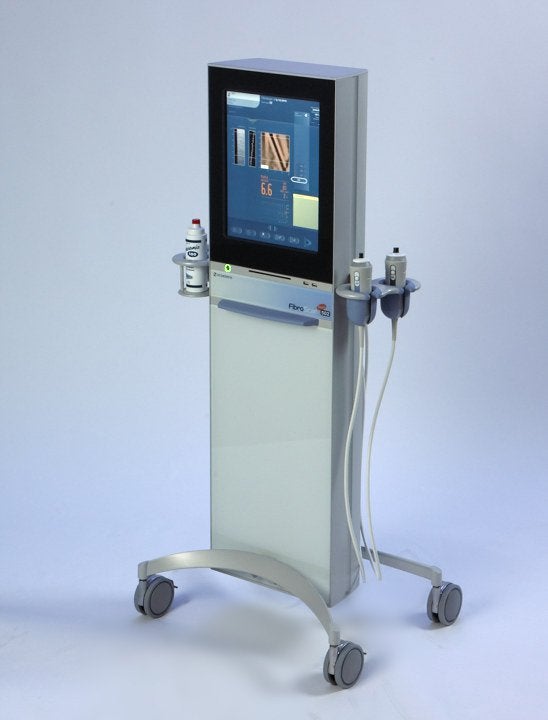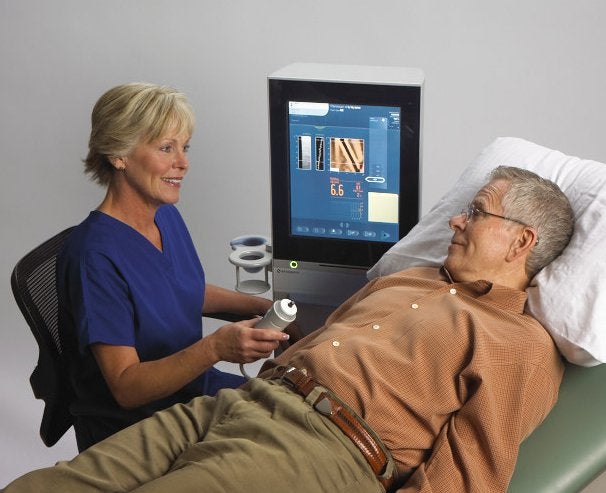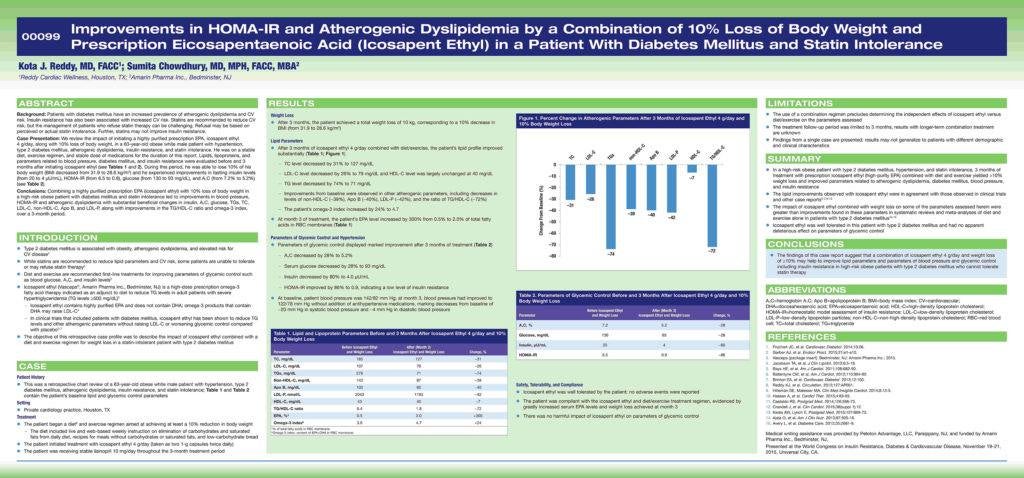-
Understanding the Hidden Health Condition Affecting Obesity
With all the medical problems we see today including diabetes, heart disease, obesity, and some cancers; one very common condition may be fueling most of these diseases. This disease is called Non-Alcoholic Fatty Liver Disease or more simply ‘FATTY LIVER’. It is seen in people who don’t drink alcohol, but their livers resemble that of a person who is an alcoholic. This condition is more common than you might think; in fact 25% of people in the United States are affected by it and probably, even more, are undiagnosed. So there’s a good chance you might have it. The worst part is many doctors do not know how to treat this disease, let alone check for it routinely.
Have you heard the saying “All roads lead to Rome”? It is an old idiomatic expression which explains that many different routes would lead to the same goal. It is based on the fact that the Roman Empire’s road system is designed in such a way that all of its roads radiate from one source which is the capital. Fatty liver disease is exactly like Rome. Most if not all disease processes emanate from fatty liver.
So if you have diabetes, heart disease, obesity, or other diseases, you also have a fatty liver. And the only way to cure all these conditions is to reverse your fatty liver.
Let’s take a crack at it today and learn everything about fatty liver disease and how to reverse it. Watch the video.
-
Two of the Common Things You Complain Every Day May Be a Sign of an Already Advanced Disease
As simple and as common as forgetting where you placed your keys and feeling tired most of the time could be the only indications that a silent disease is on its advanced stage.
I have been in practice for eighteen years in the field of Cardiology and as I look at all the medical conditions like heart disease, diabetes, and obesity in a different perspective, I now realize that they all stem from a condition called Fatty Liver Disease. One day I was talking to my friend who is a gastroenterologist and I asked him a simple question; if I have a fatty liver, what signs and symptoms would I have? He said, ‘None.’ So I asked him again, if I continue to develop fatty liver to the point where all of my liver cells are full of fat, what would happen then? He told me, ‘You will develop inflammations in your liver which will lead to fibrosis or ‘scarring’ of the liver. But then you will still have no symptoms. Even if ninety percent of your liver is scarred, you will still have no symptoms. The only time you may have symptoms is when ninety-five percent of the liver is already scarred. But most people, even at this stage, will only have two symptoms; one is mild memory loss and the other is mild fatigue.’
Now, who among you have never experienced forgetting where you placed your keys and feeling tired all the time? The scariest thing is that when you are at this point, you are just one step closer to liver cirrhosis and liver failure. More than ninety percent of your liver could be scarred and you may never know it until it is too late.
Watch the video below and learn everything you can about fatty liver disease and how it can be diagnosed. Find out which test will tell you how much ‘fat’ or ‘scar’ is in your liver and work on reversing Fatty Liver Disease.
-
Non-Invasive Fatty Liver Diagnosis with FibroScan
Non-Alcoholic Fatty Liver Disease (NAFLD) is the leading cause of chronic liver disease and is now projected to become the leading cause of liver transplants within the next decade. Fatty liver disease develops silently and signs and symptoms become obvious only when it becomes irreversible. Most people who die of the disease don’t realize they have it until the very late stage. Therefore screening people with risk factors of liver disease is critical in catching the disease early.
Reddy Cardiac Wellness and Diabetes Reversal Center of Sugar Land, Texas is announcing the availability of FibroScan, a newly approved technology to accurately and painlessly diagnose liver disease. FibroScan is an ultrasound-based vibration-controlled transient elastography (VCTE) device used to asses liver elasticity for the detection of significant fibrosis and for the diagnosis of cirrhosis in hepatitis C virus, hepatitis B virus, biliary liver disease, alcoholic liver disease, and non-alcoholic fatty liver disease.
A FibroScan test eliminates the need for a liver biopsy, where a 6-inch needle is inserted into the liver to extract a sample for testing under a microscope. In addition to being painful, biopsies are expensive, running as high as $7,000. FibroScan tests are dramatically less expensive.
FibroScan was first introduced in Europe in 2003 and received clearance by the US Food and Drug Administration (FDA) in April 2013. Now, FibroScan has a newly developed controlled attenuation parameter (CAP) that detects and quantifies steatosis, the fatty accumulations in the liver cells. It can precisely tell you how much fat is in your liver.
As of now, the Reddy Cardiac Wellness and Diabetes Reversal Center is the only center in the state of Texas that has the CAP capability in their FibroScan machine. The population of the greater Houston area can surely take advantage of this technology to have their livers checked for the silent fatty liver disease.
The American Liver Foundation estimates that 1 in 10 Americans has liver disease. Liver disease is the fourth leading cause of death among adults 45-54. More than 6 million children in the U.S. have non-alcoholic fatty liver disease and the wrongful diet most Americans eat could be to blame.
People with fatty liver can develop a more serious form of fatty liver called steatohepatitis in which the fat causes inflammation that leads to fibrosis or ‘scarring’ of the liver. Once the liver is replaced with scar tissues, it will develop cirrhosis and liver failure. This is the only time you will have signs and symptoms. By then it could be too late. The only way to prolong life at this point is to have a liver transplant. But the most important questions to ask are: who are you going to ask for a liver and how sure are you that the donor’s liver you are getting is healthy?
-
What Is In Your Liver: Fat or Scars?
FibroScan is an ultrasound-based vibration-controlled transient elastography (VCTE) device used to assess liver elasticity for the detection of significant fibrosis and for the diagnosis of cirrhosis in hepatitis C virus, hepatitis B virus, biliary liver disease, alcoholic liver disease, and non-alcoholic fatty liver disease. FibroScan also has a newly developed controlled attenuation parameter (CAP) that detects and quantifies steatosis, the fatty accumulations in the liver cells. It can precisely tell you how much fat is in your liver.
If you want to find out if your liver has fat or scars, you have two choices. You can either undergo a painful procedure called a ‘liver biopsy’ or do a simple FibroScan test which is painless. In addition to being painful, biopsies are expensive, running as high as $7,000. FibroScan test eliminates the need for a liver biopsy and is far less expensive.
FibroScan test is now available at the Reddy Cardiac Wellness and Diabetes Reversal Center in Sugar Land, Texas. The population of the greater Houston area can surely take advantage of this technology to have their livers checked for liver disease.
By doing a FibroScan test in our facility, we will accurately tell you how much fat is in your liver and if you are developing scars in your liver. These scars, if left untreated, will lead to cirrhosis and death unless you get a liver transplant. But why would you want to wait for that to happen? Find out today if you have fat and scars in your liver and let us teach you how you can reverse this disease.
Watch the video.
-
Can You Naturally Reverse Type 2 Diabetes Symptoms
The idea of completely reversing diabetes has been questioned time and time again. In order to determine the answer to this question, you must take into account a few factors, such as what type of diabetes are you dealing with and whether or not your body is producing insulin. There are two types of diabetes, type 1 and type 2. Type 1 or sometimes called juvenile-onset diabetes is rare and usually diagnosed in children and young adults, though it can develop at any age. In type 1 diabetes, the body does not produce insulin.
Insulin is a hormone that helps your body’s cells use sugar, or glucose, as fuel for their functions. If you do not have insulin, you may develop hyperglycemia (high blood sugar), which can cause long-term complications if the blood sugar levels stay elevated for long periods of time. Type 1 diabetes cannot be reversed and people with this type of diabetes need life-long insulin therapy. However, keeping a healthy diet and regular exercise can reduce the amount of insulin needed to maintain a normal blood sugar level.
Type 2 or adult-onset diabetes is the most common form of diabetes. In type 2 diabetes, the body produces insulin but the body is resistant to its effect, therefore making it hard to maintain a normal blood sugar level. Often a medication called metformin is prescribed to help restore the body’s proper response to insulin. Other medications may also be added to help reduce the amount of blood sugar in the body.
Insulin resistance is caused by a diet high in fructose, being overweight, and lack of physical activity. If you make improvements on your diet and you lose a significant amount of weight, you can reverse insulin resistance and make your body sensitive to insulin again, even without medications. By reversing insulin resistance, you also reverse type 2 diabetes.
Typically, doctors refer to “diabetes reversal” when you are able to go off your medication while engaging in a healthy lifestyle program. Obviously, when you are not taking medication for diabetes and your blood sugar is under control, you do not have diabetes or you have reversed diabetes. But the important message here is that you have to keep a healthy lifestyle program. If you fall off the wagon and start eating the wrong stuff again and stop exercising, you will end up with diabetes yet again.
So, to answer the question ‘Can type 2 (adult-onset) diabetes be reversed?’, the answer is YES. Can it be reversed with diet and exercise? Absolutely YES. Watch the video and learn about the case of a 63 y/o Caucasian male who reversed his type 2 diabetes in 90 days after joining our program. This case report was presented at the World Congress on Insulin Resistance, Diabetes & Cardiovascular Disease on November 19–21, 2015 at Universal City, CA.
-
This Combination of Carbohydrate and Fat is the Reason Why Heart Attacks are Rampant During the Holidays
There is a 40% increase of heart attacks in the last two weeks of December and first two weeks of January because of what we eat most during the holidays. The combination of sugar and fat, especially the ‘caramelized’ fat seen in almost all desserts can make the small-sized bad cholesterol ‘oxidized’ to form plaques faster or make existing plaques unstable and cause heart attacks.
-
Having Fatty Liver is Like Walking Through Life Blindfolded
When you have fatty liver, it’s like walking through life blindfolded. You won’t have any signs and symptoms of the disease. You are unaware of the things you are doing that are making your liver ‘fatty’ and unhealthy. You are unconscious of your liver being ’scarred’ from all the abuses it is receiving. Until you reach the edge of a cliff.
Now, the next step you take will make you fall down to your death. But from the moment you slip to the point of your death, would be the only time you will show signs and symptoms of liver failure.
At that particular point where you are about to take your final step off the cliff, you only have two options: one, proceed and die a miserable death due to side effects and complications of liver failure or two, find someone who is willing to donate their liver and go for a liver transplant.
If you are lucky enough to get a liver transplant, you will survive. But the next question I’m going to ask is, do you know how healthy your donor’s liver is? If the donor’s liver is also ‘fatty’ and ‘scarred,’ what are your chances of a good recovery?
So where are you now? What is in your liver? Is it ‘fatty’ or ‘scarred’? Watch the video and find out before it is too late.
-
Age Should Not Be a Barrier to Reclaiming Your Health and Wellness
How a Lady Reversed Her Diabetes and Lost 160 Pounds at Age 93:
What a better way to start this blog than to tell you all about a remarkable story of a 93-year-old lady who, at her age, reversed her diabetes, lost weight, was sick less often, and began living again.
Ms. Dorothy Graham came to me for help three years ago to treat her diabetes, which she has had for 11 years, along with congestive heart failure, high blood pressure, and sleep apnea. She had been on oxygen 24/7 and had not been able to walk for 12 years. At that time, she was taking 18 different medications, including metformin, glyburide, and 40 units of insulin twice a day. She was miserable. I told her that the only way she could get better is to change her diet and modify her lifestyle. To tell you the truth, I wasn’t really expecting her to heed my advice as most people of her age would not. They are in the twilight years of their lives, and change is not something they want. But to my surprise, she willingly joined my diet program . I saw in her eyes that she was yearning to regain the comfort she had been missing for years because of her condition.
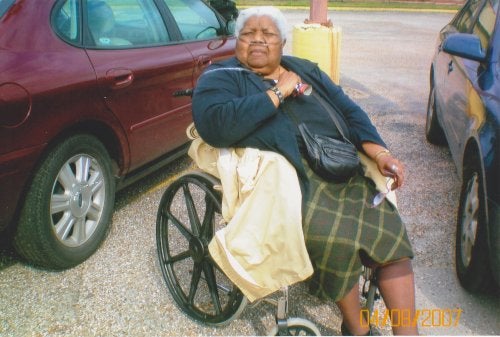
She started the program on August 29, 2012. She did everything I asked her to do. She read my book from cover to cover several times. She asked questions and learned everything she could about diet. I taught her what to eat and what foods to avoid, how to handle stress, how to sleep better, how fasting could help, and which exercises to do. She ate the Reddy Bread , using our recipes for breakfast, lunch, and dinner. Within three days, her blood sugar dropped too low so we had to stop her glyburide and insulin.
Ms. Graham followed the program “to a T,” and, by the end of three months, she was off all her medications, her blood pressure was normal, she was no longer a diabetic, her congestive heart failure had been resolved completely, she stopped needing oxygen, she was sleeping better, she had more energy, and she had lost 55 pounds. Eventually, by the end of one year, she went from a dress size 24 to a size 18 and lost a total of 160 pounds.
The most amazing thing of all is that, within less than six months, she was able to walk again with the help of only a walker. Her ambulation continued to improve through the years, and now, at the age of 96, she is able to walk and to go up and down stairs without assistance. She rides the bus by herself to go for physical therapy five days a week and occasionally does yoga. Overall, she is enjoying a better quality of life and is doing the things she could not do before. She even started learning how to use a computer for the first time.
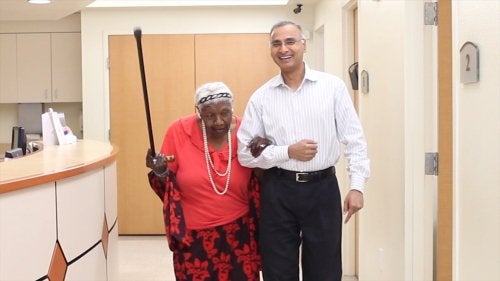
I shared this story to you for three reasons.
1. Diabetes is more serious than we can imagine. The latest data from the National Diabetes Statistics Report state that 29.1 million people in the United States have diabetes, 86 million are pre-diabetic, and 8.1 million remain undiagnosed. Sadly, 9 out of 10 do not even know they are pre-diabetic. By 2050, up to 1 in 3 American adults will have full-blown diabetes, according to the Center for Disease Control and Prevention (CDC). Diabetes robs people of the capability to enjoy a good quality of life, incapacitates the workforce, threatens the economy, and burdens the health care system. We need to be aware where this disease is taking us so we can focus on what to do about it.
2. Diabetes can be reversed, but it is not through medications or weight-loss surgeries. It is only through diet and lifestyle changes. I am not undermining the value of modern pharmaceuticals here. I believe they are very helpful in moving you out of the danger zone of debilitating diseases like diabetes. But once you are out of this zone, you need to be able to discontinue the medications and start reversing the disease process naturally by eating the right food and changing your habits. Keep in mind that when you have an infection, you take antibiotics for only 7 to 10 days or few weeks–or months in some cases–but not for years or a lifetime.
Medications will never prevent the complications of diabetes. People have a false sense of security thinking that since they are taking maintenance medications, they can eat whatever they want. If diabetes is a disease of high blood sugar and a patient continues to eat foods that raise the blood sugar and must then take medications to lower the blood sugar, how is that helping?
3. I shared this story to let you know that it is never too late to change. Ms. Graham was 93 when she started to change her eating habits and her life style. She was not only advanced in age, but her diabetes had also progressed to the point where she was having complications. However, these didn’t stop her from taking the first step towards her recovery. If she can improve her health dramatically, then everybody can! Change your lifestyle today and start learning how to eat and live right. Join me and let’s battle diabetes together. I assure you, we will win this fight.
The key to Ms. Graham’s success was her dedication to the Eat This Lose That program and the Reddy Bread with its recipes. If you want to learn more about how our program changed her life, go to www.reddycardiology.com and click on her video.
-
Everything I Know About Diet I Did Not Learn in Medical School
How a Cardiologist Started a Diet Program: Physicians are not trained dietitians. Most medical students receive inadequate hours of nutrition education, and are not taught how food relates to cellular inflammation and chronic diseases. So when a doctor tells you to change your diet, he or she may not have the slightest idea of what exactly you need to change.
I am Dr. Kota Reddy , a cardiologist who has been in practice for the past 18 years. Back in medical school, we were taught to advise patients to change their diet and lifestyle in the treatment of diabetes and hypertension. We tell our patients to eat low-carb, low-fat, and low-salt diets; exercise; lose weight; and eliminate stress. That took me far, but I soon discovered that it did not take me far enough because when I started practicing, that vague advice did not help most of my patients. At the end of the day, patients would go home without a clue of what to eat and what to do, let alone have the understanding of why they needed to avoid certain foods.
We don’t explain what kind of diet our patients should follow, what foods are making them sick, or what lifestyle they should lead in order to get healthy because the truth is we ourselves don’t know. We just don’t have that particular skill set to point our patients in the right direction. We are trained mainly to medicate. We write script after script after script with much gusto. And when one pill doesn’t work, we either increase the dose or add another one, never realizing that diet is just as important or maybe more important than the drugs patients are taking.
In 2005, I began following the advice of the so-called ‘gurus’ in nutrition. I started an oatmeal diet and encouraged my patients to do the same. I ate oatmeal three times a day. During that time, it was perceived to be the best food to eat to lower cholesterol. After six weeks on the diet, I had gained weight and noticed that my blood sugar was slightly elevated. In addition, my triglycerides were high, my HDL (good cholesterol) was very low, and my LDL (bad cholesterol) was very high, with more than 60 percent of the LDL particles being small in size (which means higher risk for heart disease). That was the day I had to ask myself, “What is oatmeal?” Oatmeal is nothing more than a grain and full of starch like rice. If I have a fatty liver, eating starch will make it worse. It will make me gain more weight, increase my triglycerides, and make me at risk for diabetes and heart disease. If I already have diabetes, then eating starch will raise my blood sugar even higher.
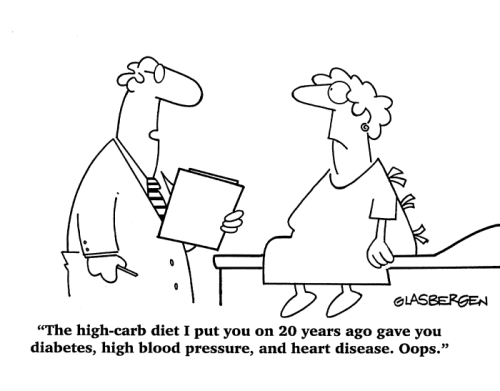
That was my turning point in the way I practice medicine today. I started asking more questions about diet and looked for answers on my own. I even invested in a machine that measures changes in ‘endothelial function’ after eating a certain food. The endothelium is the innermost layer of cells found in all the blood vessels in the body and its function is easily affected by food. If the endothelium is unhealthy or dysfunctional, the rest of the body will be unhealthy. In fact, endothelial dysfunction is the earliest stage of chronic diseases, including heart disease.
My staff and I subjected ourselves to the following experiment. Every day we ate a specific type of food and measured its effect on the endothelium. After several months, we had tested hundreds of food items, and the results were unbelievable. It made me realize that most of the people in the field of nutrition had no clue what they are talking about. They were just quoting someone else’s opinion without checking it out. Even dietitians were giving advice without any knowledge of what they were saying. “Eat brown rice not white rice.” ”Eat fruits not sugar.” “Eat dark chocolate and drink alcohol in moderation.” “Do not eat eggs or red meat.” “Eat beans for fiber, blueberries for antioxidants, and bananas for potassium.” “Do not eat avocados because they contain a lot of cholesterol and fat.” “Fat will make you fat.” “You have diabetes because it runs in your family.” “You are gaining weight because you are consuming a lot of calories.” And so on and so forth…. All these statements are wrong.
After years of experimenting and searching for answers, I wrote a book entitled Eat This, Lose That! . It is an easy-to-understand guide explaining how the foods we eat affect us and what foods we should and should not eat to help reverse diabetes and heart disease and make us lose weight. I then went further and developed Reddy Bread. When patients eat this bread for breakfast, lunch, and dinner, their blood sugar and blood pressure drops, their cravings for sugar and starch disappear, and they lose weight faster even without exercise.
Finally, following the success of the book and the bread, I started a diet program that has helped so many people reverse their diabetes and heart disease, lose weight, and get off their medications. Now, you may ask, why is a cardiologist treating patients with diabetes? Well, for the past five years I noticed an increase in the number of patients in my practice who are either a diabetic or an undiagnosed diabetic. This is understandable, as diabetes and heart disease are part of a metabolic disease network that includes high blood sugar, high blood pressure, high cholesterol, and obesity. Simply put, people with diabetes will eventually have or may already have heart disease and other complications. So treating and preventing diabetes is as good as treating and preventing heart disease. More so, when I began to analyze the process of diabetes, I became more convinced that diet has the greatest impact in the development of both. Hence, the Eat This, Lose That Program was born.
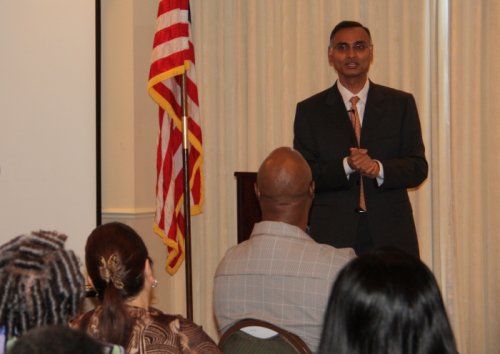
Dr. Reddy at the Diabetes Conference
My program is unique; you will not find it anywhere else. It is a product of my years of research and experience from thousands of patients. If you want more information, please visit our websites www.reddycardiology.com and www.reddybread.com . I encourage you to learn everything about diet. Ask questions and find answers yourself. Stop following other people, myself included, without reviewing the facts. In my program, I will teach you the basics of diet and lifestyle so you will have the tools to think for yourself and decide which ones are good for you. My job is to teach you more than to treat you.

